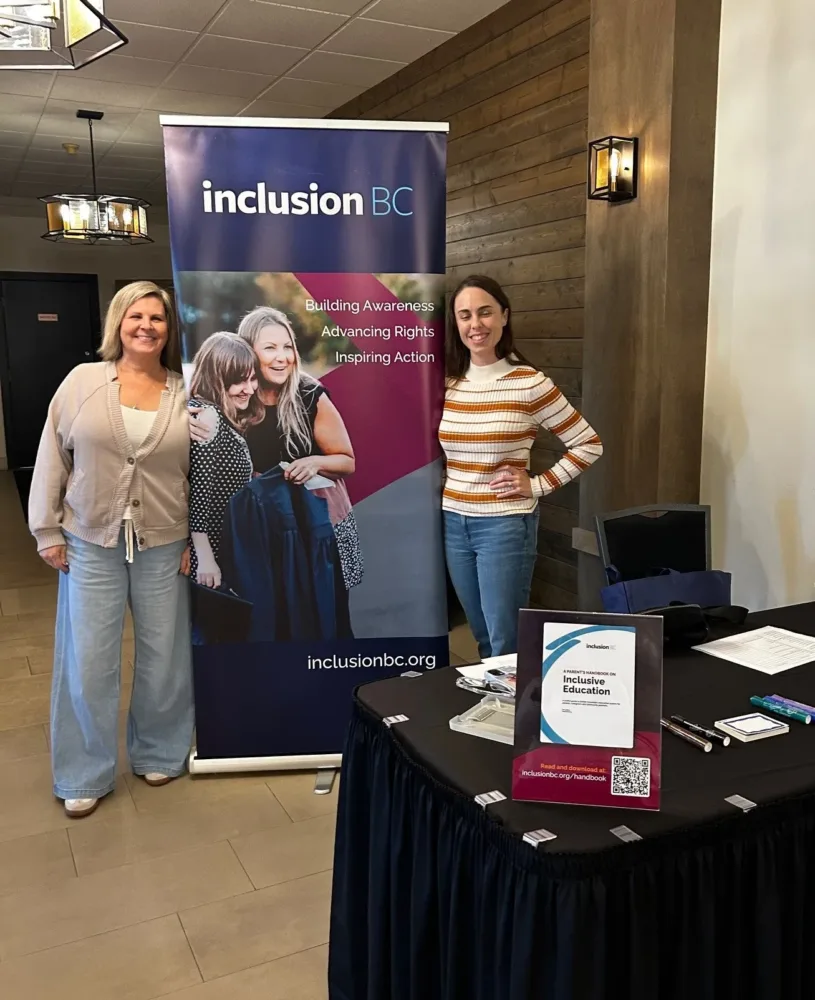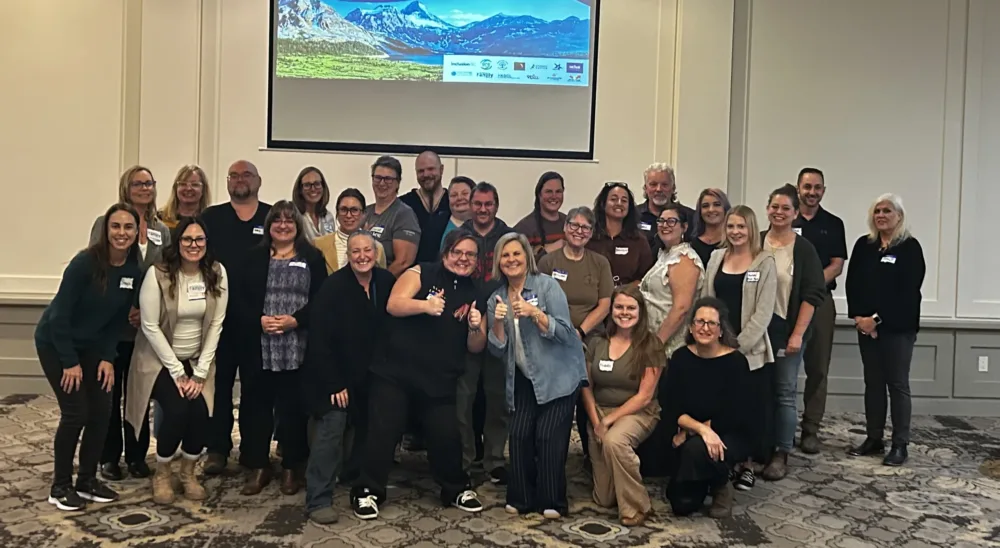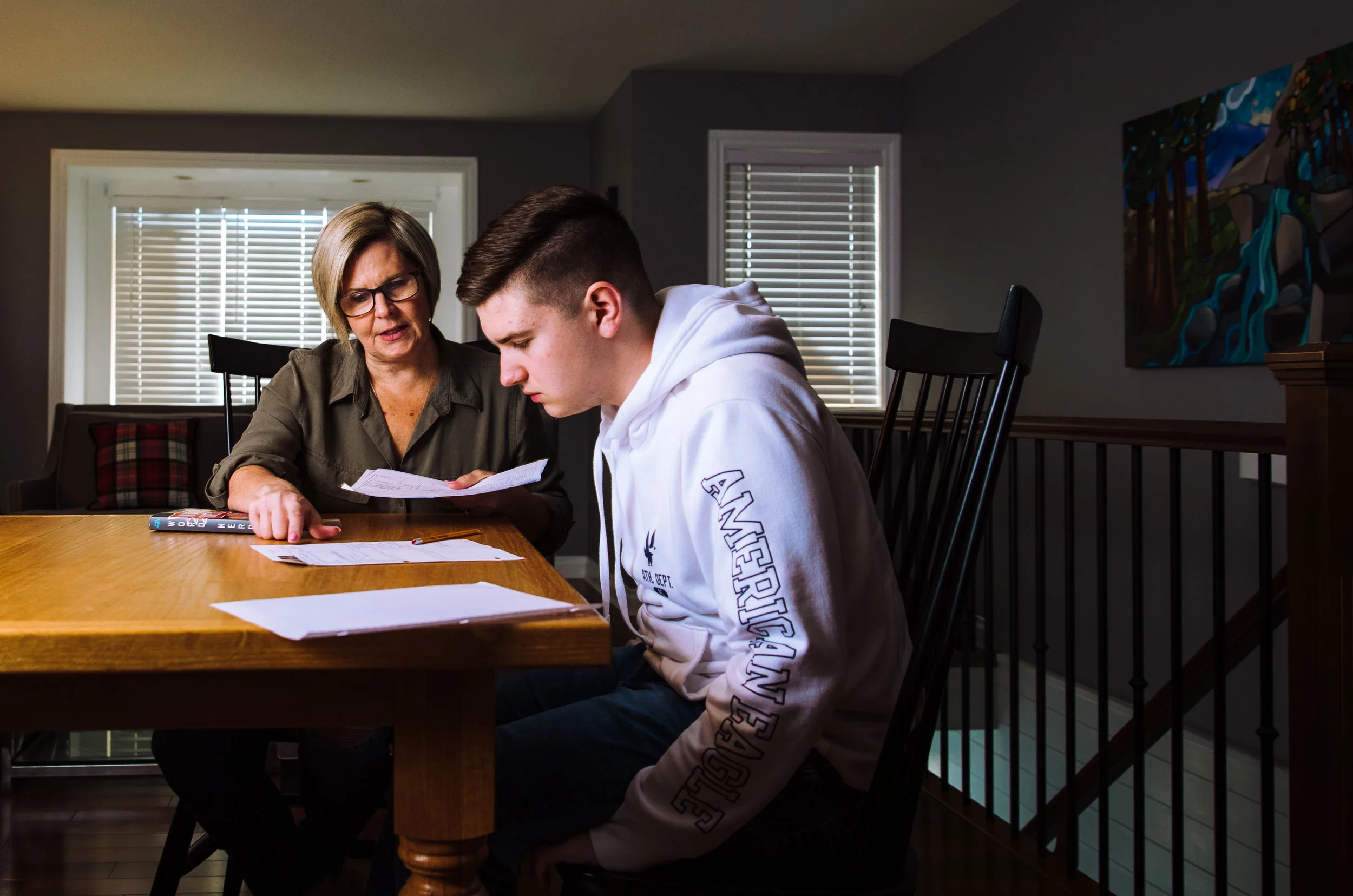What I Learned at Inclusion BC’s Family Leadership Series
By Carina Costom
What does it really mean to belong? For families raising children and adults with disabilities, that question echoes through schools, hospitals, government offices, and across kitchen tables. In rural places like the Kootenays, it’s often asked in isolation—one phone call, one denial letter, one school meeting at a time.
On October 2–3, 2025, in Cranbrook, I joined other families and advocates at the Family Leadership Series, a regional event designed to help families connect, learn, and amplify our collective voice for inclusion.
Families Gathering
We opened with stories—not the polished kind, but the ones whispered between coffee refills. The kind you only tell when you know someone else has lived it too. Grandparents, self-advocates, siblings, and tired parents found one another and exhaled a little.
“I used to think I had to do it all on my own. This weekend reminded me we’re not alone—we’re a movement.” — Parent-advocate
Between fruit trays and resource tables, people exchanged tips like treasured recipes—how to appeal funding decisions, which provider actually calls you back.
Session 1: Self-Determination
Choice isn’t a luxury—it’s the foundation of dignity. This panel centred self-advocates living interdependently—some supported by family, others by community networks—and every voice pushed back on the outdated idea that safety and control are the same thing.
“Letting me try things my way—even if I mess up—is how I grow. It’s not risky, it’s life.” — Self-advocate panellist on the dignity of risk
One mother shared how she shifted from protector to partner with her child with a physical disability. Her healing came not from doing more, but from letting go just a little.
Session 2: Advocacy
We all want to do right by our loved ones. But navigating systems—school, health, disability services—can feel like spelunking in the dark. This session lit a few lanterns. We were offered rights-based frameworks, sample scripts, and grounded wisdom for staying calm in high-stress meetings.
“Advocacy is not always loud. Sometimes it’s a well-written letter, or a clear no. Wherever you are on your journey, everybody belongs—and we are stronger together.” — Erika Cedillo, Director of Public Policy and Programs, Inclusion BC
In this next section, I’ll touch on how Kootenay families are building systems of care from the ground up—and how community creativity in planning leads the way for policy.
Session 3: Supports and Services in the Kootenays
In rural regions, accessing help can feel like trying to find water in a drought. That’s why this session mattered. Representatives from local organizations shared what supports exist, how to access them before reaching crisis, and how to keep asking even when doors feel closed. The takeaway? While funding is tight, community creativity is abundant.
“When formal systems failed us, a neighbour became our respite. That’s also a form of care.” — Family ambassador from the Slocan Valley
Session 4: Hopes, Dreams, and Planning
This session asked us to move beyond survival. It challenged us to envision what thriving could look like—for our kids and ourselves. We explored inclusive planning tools and heard from families and professionals on the importance of centring the person’s own voice—starting with simple questions like, What makes a good day?
“We started by asking my brother what makes a good day. That became the seed for his whole support plan.” — Family ambassador
Planning with someone instead of for someone changes everything.
Gratitude and Ripples
None of this would have been possible without financial support. I’m deeply grateful to Inclusion BC and to Community Inclusion Advocate Kerridan—whose generosity ensured access to travel funds. Director of Public Policy and Programs, Erika Cedillo, facilitated difficult conversations with great care and clarity. For many caregivers, invisible costs—time off, gas money, accommodations, overstimulation—can be barriers to participation. Their support dismantled that for us.
The event in Cranbrook ended, but the work hasn’t. The ripples continue—in IEP meetings, doctors’ offices, and quiet moments of courage. This series reminded me that inclusion isn’t a buzzword. It’s a practice—an invitation to build new structures where everyone fits, not just those who can “function” within the old ones. And it begins, always – as my friend Zaynab taught me – by deeply listening.
Community Leadership
If you want to advance inclusive leadership in your community, consider learning from those already doing the work: BC Schizophrenia Society, Diverse Family Roots, Family Support Institute of BC, Kootenay Family Place, Ktunaxa Kinbasket Child and Family Services, Métis Nation BC, NEXUS Community Support, Pivot Point, REALM BC and VELA Canada. Together, their work reminds us that belonging is built—story by story, relationship by relationship; and systems evolve when communities care to lead. And one more thing, here is a practical guide to meaningful engagement: Community: The Structure of Belonging by Peter Block, recommended by Erika, who will get the last word: “…remember, we now know one another 😊”

Carina Costom is a community-based artist-researcher and parent who writes about matrescence, equity, and rural resilience. Her current project, 100 Women | 100 Oceans: Notes from the Parenting Underbelly, explores transformational stories at carinacostom.com.


